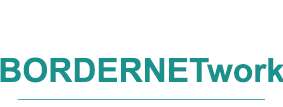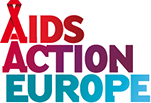Based on multi-sectoral network commitment, the partnership elaborates on outcomes of the EU project BORDERNET and produces new practice-relevant models transferred to affected regions in Central, Eastern and South Eastern Europe. 8 EU Member States (Austria, Germany, Poland, Slovak Republic, Bulgaria, Romania, Estonia, and Latvia) and 4 ENP countries (Ukraine, Moldova, Serbia, Bosnia and Herzegovina (BiH) – subcontractors and collaborating partners), divided in 5 model regions take part. Given that highly active prevention is the main vehicle to decrease HIV rates, the project will: boost regional networks in public health sector and mobilise civil society resources in order to increase the impact of local response; enhance links between epidemiological and behavioural research and evidence-based interventions; contribute to coordination of practices for increased quality assurance; and forge better links between diagnostic and treatment systems

Fax:
+49 30 251 60 94
Contact person:
Elfriede Steffan, Tzvetina Arsova Netzelmann
Address:
Kottbusser Str. 9
10999 Berlin
Germany
Telephone number:
+49 30 252 16 19
E-mail:
arsova-netzelmann@spi-research.de
Key population:
People living with HIV (PLHIV)
Lead Partner:
SPI Forschung gGmbH (BORDERNETwork project)
Associated Partners:
AHW (Austria), HESED (Bulgaria), NIHD (Estonia), AISC (Estonia), RKI (Germany), MAT (Germany), AHP (Germany), Papardes Zieds (Latvia), SPWSZ (Poland), POMOST (Poland), ARAS (Romania), PRIMA (Slovak Republic)
Project objectives:
<p>1)Interdisciplinary networks: To scale up the implementation of highly active prevention through boosting network cooperation on national, model regional and cross-border level in CEE and SEE in a three-year period; 2) Bridge research to practice: To advance by 2012 the state of research and evidence of HIV/STIs risks through outline of comparable risk behavioural indicators among vulnerable groups and to bridge findings to effective HIV combination prevention; 3) Early diagnostic: To intensify efforts for two years in early diagnosis of HIV and STIs for most at risk groups based on human rights and gender equity and to decrease the number of those unaware of their infection status; 4) Referral and treatment systems: To augment by mid 2012 the country-specific evidence on treatment and care of HIV and co-infections and to enhance interlinks in referral systems for diagnostic, treatment and care of STIs, HIV/AIDS and co-infections; 5) Participatory approaches: To improve HIV/STIs in two-and-a half-years period community based prevention and sexual health for ethnic minorities (e.g. ROMA) and migrant groups through capacity building in participatory prevention models; 6) Quality assurance in youth prevention: To enhance accountability and evidence-based evaluation in youth HIV/STIs prevention, sexual and reproductive health and rights (SRHR) programmes by end of 2011</p>
Results:
The improved effectiveness and efficiency on regional and cross-border level in interdisciplinary response to AIDS/STIs and scale up of HIV/STI-testing put forward the practical implementation of HIV combination prevention. Not least synergies in inter-sectoral cooperation, improved permeability of health services and sustainability of transferred intervention models will be assured by the generated network competency. The involvement of the national AIDS programme levels (also co-financing, eg German MoH) will contribute to the sustainable deployment of the outcomes
Collaborating Partners:
BZgA (Germany), BMG (Germany), DAH (Germany), Kompetenz-Netz (Germany), University of Zielona Góra (Poland), Slovak Medical University (Slovak Republic), Lviv Regional AIDS Centre (Ukraine), Ministry of Health and Social Welfare, Republika Srpska (BiH), Ministry of Health (Republic of Serbia), League of PLH (Republic of Moldova)
Duration of Project:
36 month (January 2010-December 2012)
Methods Used:
Proven selected methods: networking and capacity building (eg communication and method competence trainings), behaviour HIV/STIs surveillance among sex workers (incl. IDUs), sentinel surveillance (STI-clients/patients), qualitative survey, self-assessment of HIV-testing sites, exchange of best practice in early diagnostic for vulnerable groups, evidence based models of participatory community HIV prevention among ethnic minorities, quality assurance tools for youth HIV prevention, sexual and reproductive health programmes
Output / Materials produced:
Transferable concepts for highly active prevention and list of common health objectives achieved; communication training courses for medical professional, ToT courses for university teachers, Curriculum om Communication and Counselling competence, Research reports from behavioural surveillance among SWs and IDus and sentinnel surveillance among STI-patients, Exchange workshop on best practice in early diasgnostic for most at risk groups, Guidelines for referral and management of HIV Co-infections, Manual with best practice for community participatory methods in HIV prevention among ethnic minorities and migrant groups, On-line self-evaluation tool for quality assurance of HIV prevention among young people.
Dissemination Channels:
Website, E-Newsletter, Conferences, World AIDS Conefernce, European Platforms and Clearinghouses, Scientific Journals
Evaluation:
Internal Process Evaluation and External Evaluation (based on input and outcome indicators) conducted by the University of Applied Sciences Northwestern Switzerland, School of Social Work
